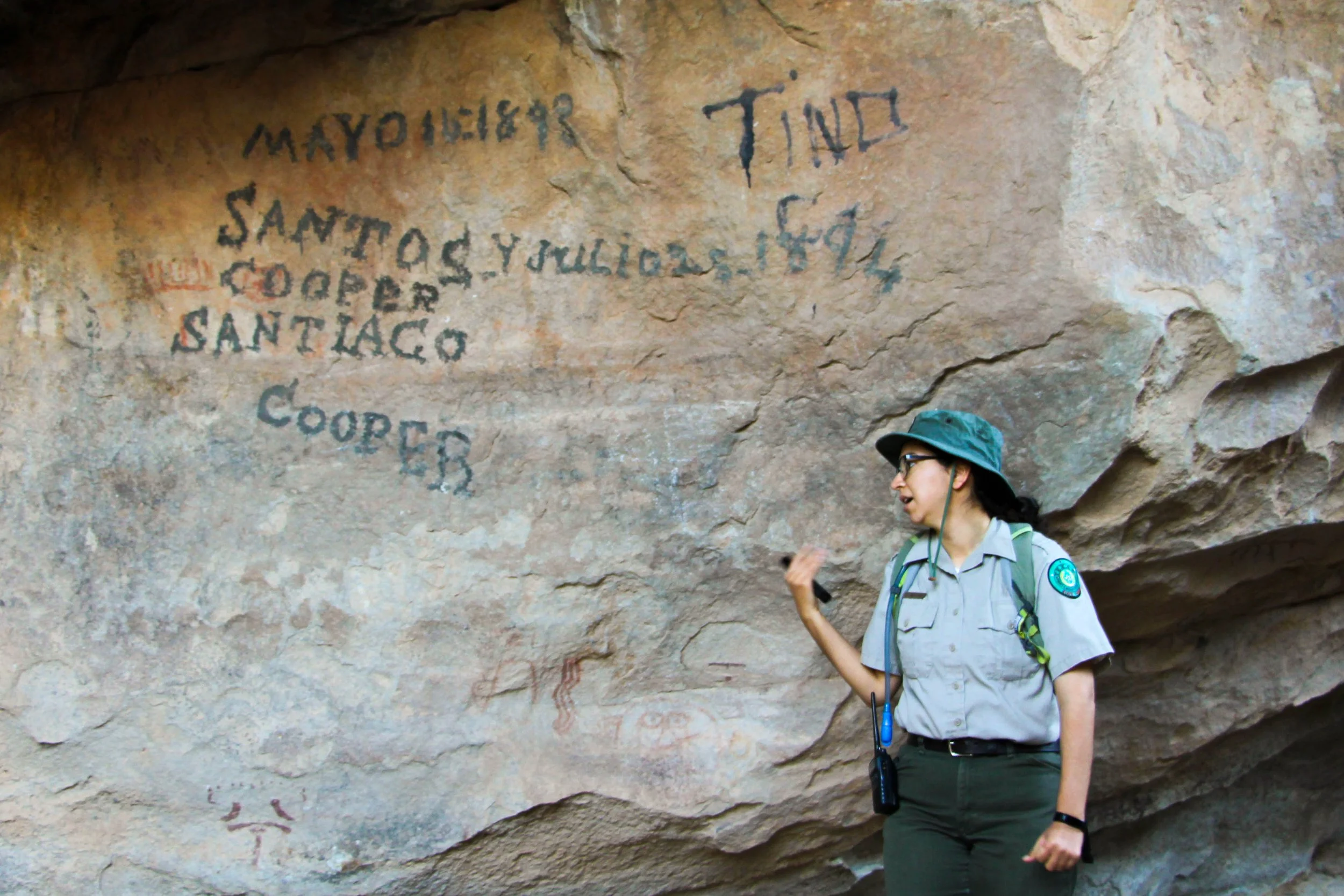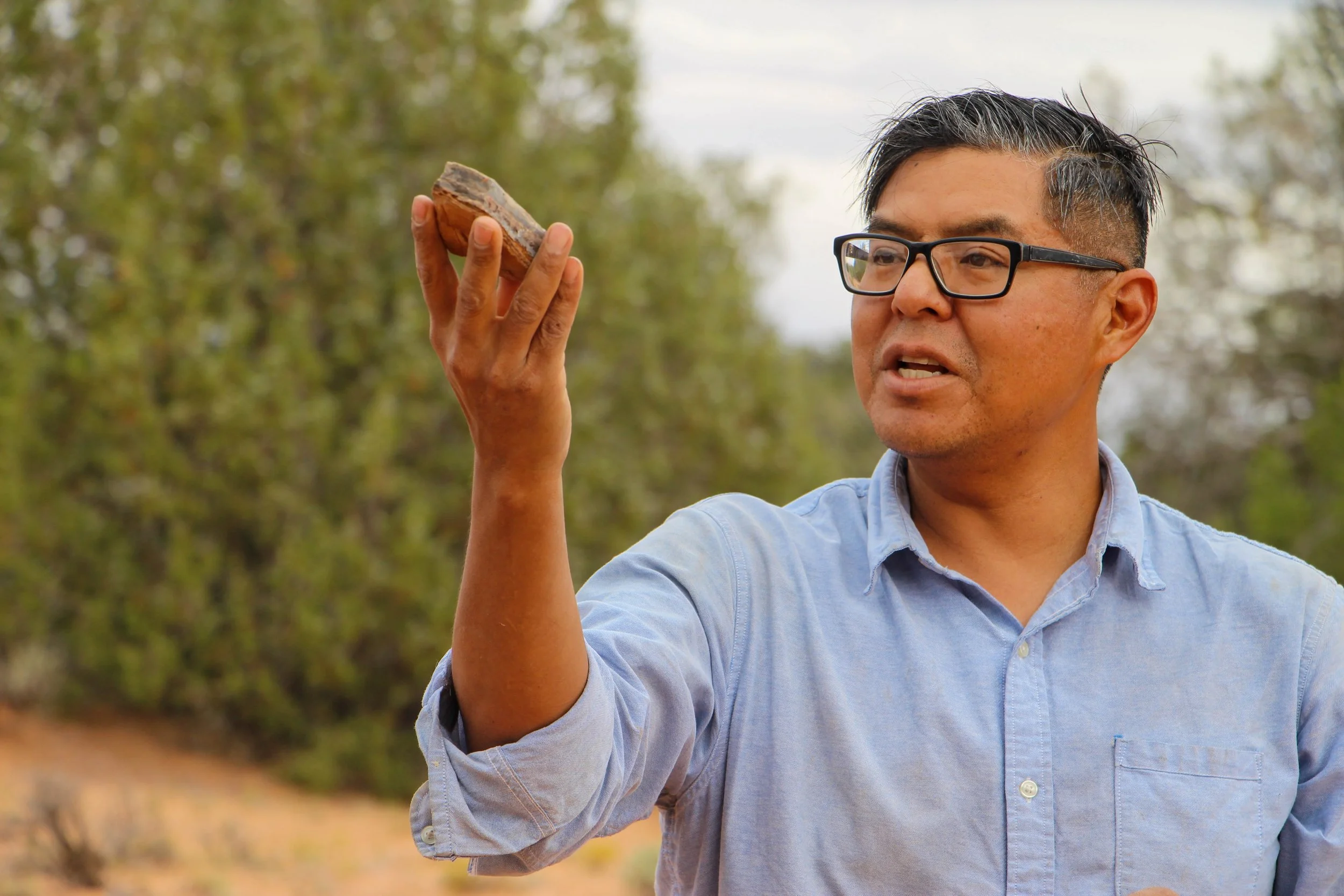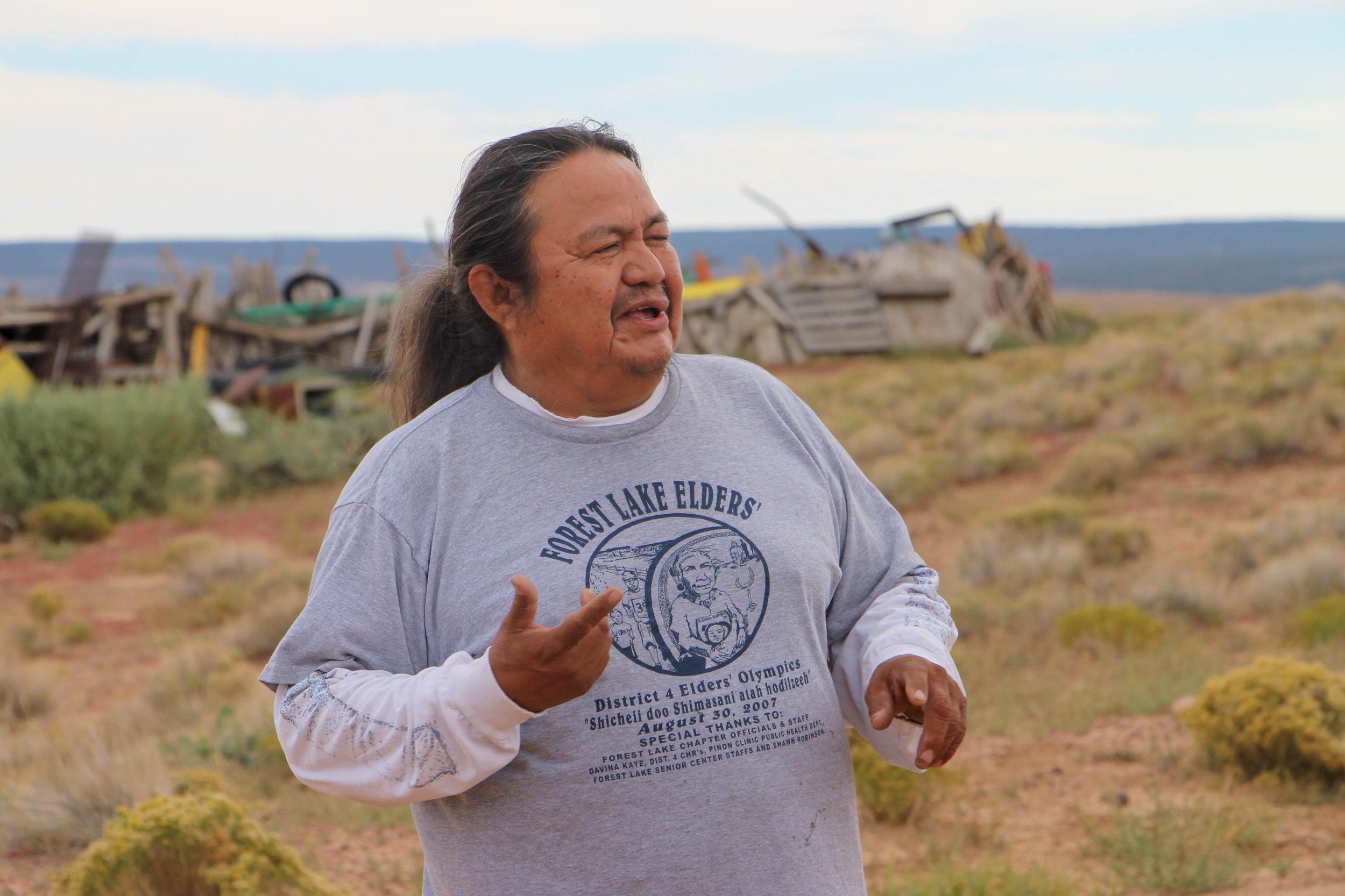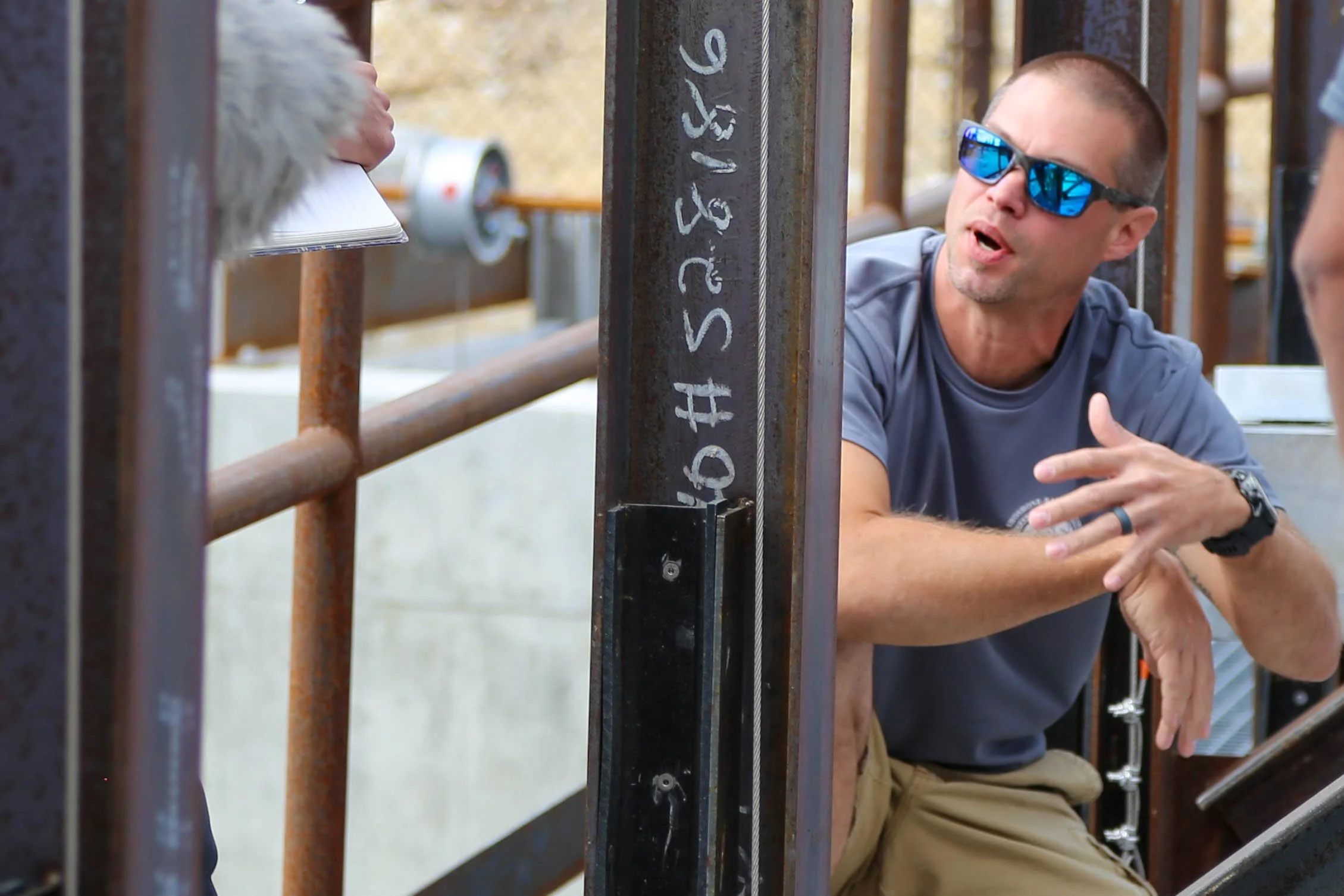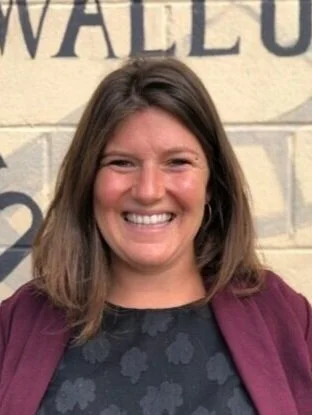Elizabeth Parra
Interpretive Ranger, Texas State Parks
Hueco Tanks State Park, TX
11/5/21
Elizabeth Parra works as a State Park Ranger at Hueco Tanks State Park, near her hometown of El Paso, Texas. Elizabeth grew up camping and hiking with her family in a nearby forest, Ruidosa, which inspired her love of science and natural world. As an adult, Elizabeth works to help people emotionally connect with the natural resources around them. “It’s super special when you see someone out here, young or old, and they go ‘Wow, I never knew.’”
The Hueco Tanks area is ancestral land to many different communities, including the Jornada Mogollan, Mescalero Apache, the Ysleta del Sur Pueblo, Comanche, and Kiowa peoples. Hundreds of Jornada Mogollan petroglyphs are tucked away in corners of the mountains at Hueco Tanks. “What makes this place special is the geology and the amount of human history we have here,” Elizabeth says.
Part of Elizabeth’s job is to protect cultural resources like the petroglyphs from damage. However, visitors have carved into walls containing petroglyphs in numerous areas around the park, resulting in a separation of Hueco Tanks into self-guided and ranger-guided tours. Over the past two years, new graffiti has increased, as the pandemic has brought greater crowds into the park. Elizabeth says that the desire to protect the pictographs from other writing is based on their historical importance and the effort that went into creating them. “A lot of these images are grounded in ceremony, tradition, their own historic record as well — compared to me buying a Sharpie at Walmart for five dollars and just writing my name.”
By Emma Fletcher-Frazer

